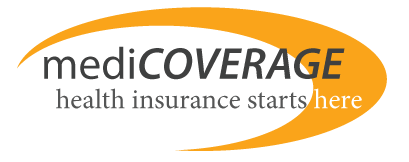Medicare-Eligible Health Plan: The Keys to Medicare and Medigap Coverage
The Medicare-Eligible health plan landscape can be split into two main categories: Medicare and Medigap. Most US citizens aged 65 and older are eligible for Medicare (also some people aged lower than 65), but because Medicare doesn’t cover all of the services that many need, Medigap (also called Medicare Supplemental Insurance) exists to fill in the gaps. Following are the main points to consider when researching health plans.
Keys to the four parts of Medicare
Part A: You get premium-free Medicare part A as long as you paid enough taxes into Medicare while working; a good gauge is if you’re eligible to get Social Security, then you’re likely eligible for premium-free Medicare part A. But part A only covers hospital services such as inpatient care in hospitals and skilled nursing facilities.
Part B: More general medical services such as doctor’s visits and outpatient care are covered by Part B.
Part C: Also called The Medicare Advantage Program, Part C offers an alternative by skipping Part A and B and instead going with private insurers. The benefits offered in Part C include those from Parts A and B, as well as other benefits such as additional medical, dental and vision coverage. Some Part C plans require policy holders to pay a separate premium in addition to the premium for Part B.
Part D: The final part of Medicare helps offset the cost of prescription drugs. To enroll, you need to choose a separate Medicare-approved plan offered by a private insurer, or select a Part C plan that includes Part D coverage.
Keys to Medigap Health Plans
Medigap plans are offered by private insurers as a supplement to parts A and B of Medicare. While the premiums for Medigap plans are usually more than those for Part C Medicare Advantage plans, the copayments and deductibles are often less.
Tip: Because Medigap plans and Medicare Advantage plans are both designed to fill the gaps left by regular Medicare coverage, you should NOT consider purchasing both.
Like the parts of Medicare, Medigap plans are identified by the letters of the alphabet. There are many different Medigap plans: A through D, F, G, and K through N. Additionally, the benefits for all Medigap plans are standardized, so all same-lettered plans include the same benefits. This makes it easy to compare plans sold by different insurance companies because the only difference is often cost.
It’s also important keep in mind how Medigap plans are rated, which effects how the costs rise over time. There are three ratings: (1) Issue-Age-Rated, in which the premiums are set based on your age at the time of purchase, (2) Community-Rated, in which the premiums are the same for everyone in a defined community, and (3) Attained-Age-Rated, in which the premiums change to reflect your age as you get older.
Now that you understand Medigap a little better, you will want to learn if Medigap covers dental.
Once you’ve processed the above, click here to learn more about how Medigap plans are rated and to get a Medigap quote

Comments and Questions
Click to leave a CommentComment from ms mercer ervin on December 23, 2011
Can we ask questions relating to medigap coverage?
Comment from Christopher0877 on October 20, 2011
Health care issues should be given top priority.If any issue arises it should be dealt immediately.. I went with a part F because it covers everything.
Comment from Barbara J Lemmon on June 16, 2011
Senior Health Plan Quotes link was does not work.
EDITORS NOTE: THANKS FOR THE NOTICE BARBARA! OUR TEAM HAS CHECKED AND FIXED THE LINK. TRY IT AGAIN NOW.
Leave a Question or Comment
A moderator turned off commenting for this post